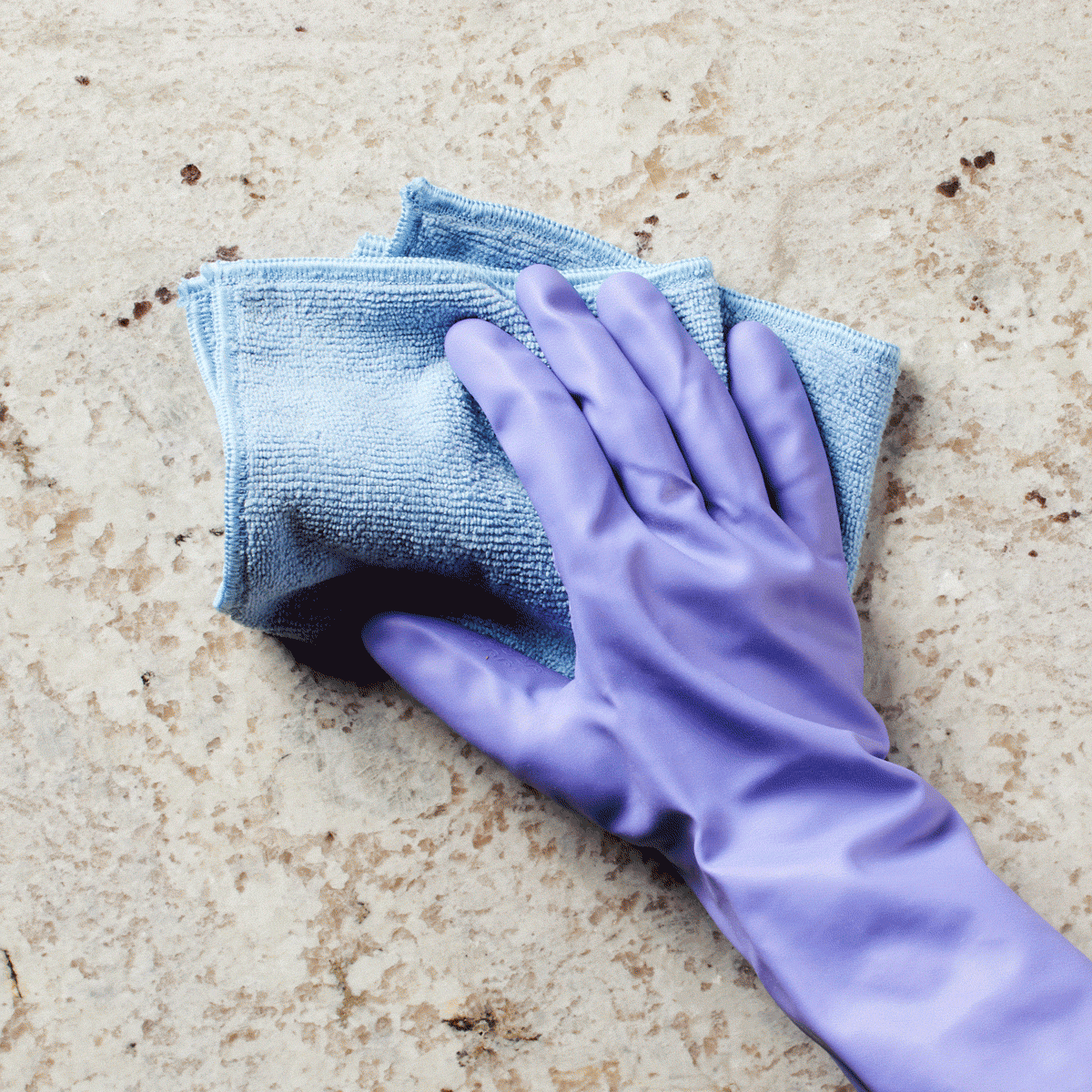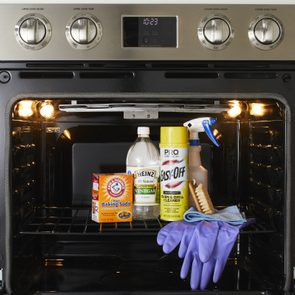How to Clean a Garbage Disposal So It Doesn’t Stink Up Your Kitchen
Updated: Apr. 18, 2024
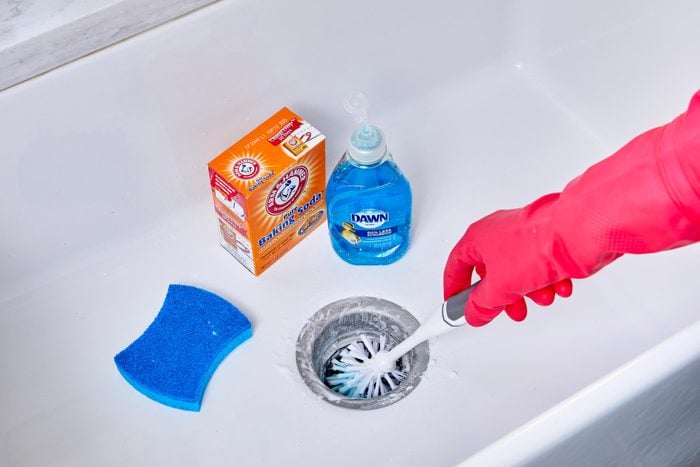
Learn how to clean your garbage disposal using things you already have at home with these expert-endorsed tips
Garbage disposals may seem like magic—after all, they take all your food waste and make it disappear in a flash!—but they need just as much cleaning and maintenance as your other appliances like the stovetop and even the kitchen sponges you use to clean them. Maybe more so, since food debris can secretly build up underneath the surface, and those dank, dark conditions cause bacteria to thrive, according to Allen Rathey, director of the Indoor Health Council, an advisory group for cleaning professionals. And aside from stinking up your kitchen, all that muck can potentially clog your sink drain. That’s why it’s essential to learn how to clean a garbage disposal.
Luckily, cleaning this handy kitchen gadget doesn’t take long, but for it to be effective, you need to know how to clean it the right way. You also need to clean it frequently enough—something that most people don’t do, says Alicia Sokolowski, a cleaning expert with more than 15 years experience as president and co-CEO of AspenClean natural cleaning solutions.
For help on this topic, Reader’s Digest asked Sokolowski, Rathey and Alan Soukup, the owner of Bluefrog Plumbing + Drain of North Dallas, Texas, to walk us through the various methods to clean your garbage disposal and keep it smelling fresh. Here’s what you need to know.
Get Reader’s Digest’s Read Up newsletter for more cleaning, tech, travel, humor and fun facts all week long.
About the experts
Reviewed for accuracy by: Ann Russell, TikTok’s “cleaning auntie” and the author of How to Clean Everything. |
What causes a garbage disposal to smell?
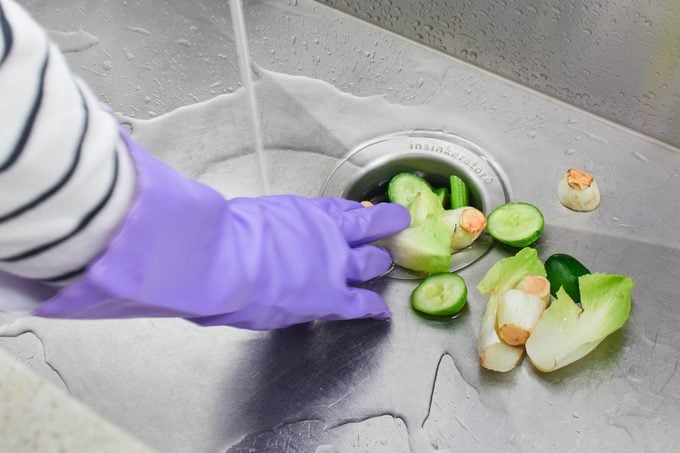
In a word: food. “Smells are usually the result of decaying bits of food that have escaped the grinding process and gotten stuck in the appliance,” Sokolowski says. And that rotting, spoiled food can emit a sour and pungent stench, like bad breath or spoiled milk.
Even if you’re careful about what you put into the garbage disposal, adds Rathey, “over time, a thin film of grease can form on disposal blades from routine use,” including rinsing dishes and washing pans. Unfortunately, odor-causing bacteria loves this greasy organic material. Bacteria produces hydrogen sulfide—which smells like rotten eggs—while it breaks down all that gunk.
Another potential culprit is mold, which can smell musty. Mold is everywhere, and the only thing those microscopic, airborne spores need from you is a wet place to land. And guess what? Your garbage disposal looks pretty darn inviting! Remember that mold isn’t just stinky. It can also irritate allergies and asthma and eventually cause property damage if not eradicated, so you definitely don’t want to ignore it.
How to clean a garbage disposal
Leave the store-bought cleaners for other tasks. Experts say the best way to clean a garbage disposal is with natural items. And these homemade cleaners aren’t just the most effective options—they’re also the most cost-effective. You probably even have most of them in your kitchen already. That said, there are a few different methods you can try, depending on your personal preference and just how dirty your garbage disposal is.
How to clean a garbage disposal with ice
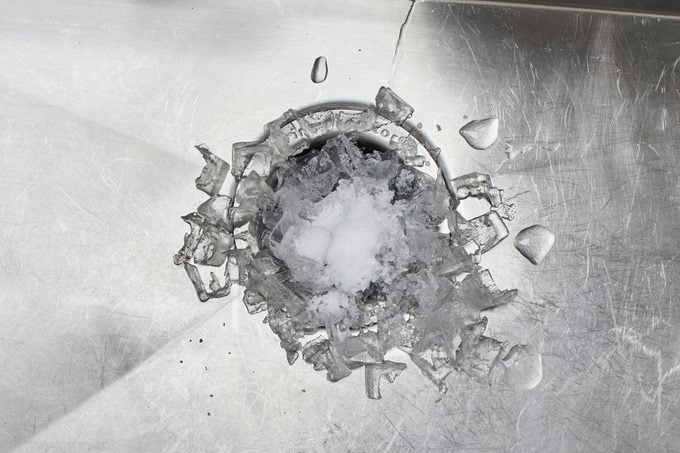
According to Soukup, it’s a good idea to run ice chips through your disposal periodically, since grinding the ice dislodges food from the blades, as well as cleans the sides of the disposal. Plus, this garbage-disposal cleaning method is super easy—and you can do it as often as you’d like (even daily) to keep food and greasy buildup at bay.
- Turn on the cold water.
- Add a handful of ice cubes.
- Run the disposal to grind up the ice.
- Turn off the disposal once the ice is gone and the grinding sound stops.
- Keep the water running for at least 30 seconds to rinse away any debris.
How to clean a garbage disposal with vinegar and baking soda
Vinegar (a weak acid) and baking soda (a weak base) react strongly when combined as they work to neutralize each other. In the small, contained interior of the drain, their bubbly, frothing action helps dislodge grease and food remnants and can really perk up a smelly garbage disposal. In fact, Sokolowski touts this as one of “the best solutions to get rid of the smell.”
- Rinse the sink with cold water, and clear the drain by running the disposal.
- Turn off the disposal.
- Pour 1/4 cup of baking soda into the disposal.
- Add 1 cup of white vinegar.
- Let it fizz for a few minutes.
- Turn on the cold water, and run the disposal for at least 30 seconds to clear.
How to clean a garbage disposal with borax
Because the greasy buildup in your garbage disposal consists of fatty acids, “alkaline cleaners can be effective in removing the film,” Rathey says. Borax, aka sodium borate, is a naturally occurring mineral compound that cuts through grease. But be careful: Even though borax is a “natural” product, it is still strong and can irritate your skin.
- Put on latex or rubber gloves.
- Add 1/2 cup of borax to 12 ounces of hot tap water. Stir to dissolve.
- Pour into the garbage disposal.
- Allow the solution to sit in the disposal for 30 minutes.
- Turn on the cold water and run the disposal for at least 30 seconds to disperse and drain the solution.
- One round should do the trick, but if not, repeat until the smell is gone.
Pro tip: There’s no hard-and-fast rule for the amount of borax to use. Start with the 1/2 cup to 12 ounce dilution listed on the box, and adjust up or down depending on the level of grime and odor. “Experiment with different amounts of borax dissolved in hot water,” Rathey says, “and use the weakest solution that gets the job done.”
How to clean the garbage disposal’s rubber splash guard
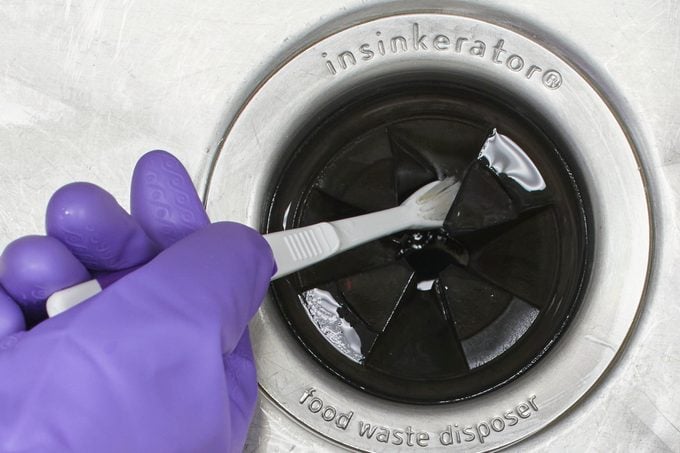
The rubber splash guard sits at the top of your disposal. Also called a sink baffle, it’s what keeps all that ground-up food from splashing into your sink—and it gets pretty disgusting, so don’t skip this part! Hot soapy water and baking soda are all you need to get your baffle squeaky-clean.
- Unplug your disposal, or cut the power at the breaker if it’s hardwired, before cleaning the baffle.
- In a bowl, mix 1 cup of hot water with a squirt of dish soap. (Alternatively, squirt dish soap directly on a toothbrush.)
- Dunk the toothbrush in the water-and-dish-soap mixture, and work up a lather.
- Dip the toothbrush in baking soda, coating the bristles. Get plenty on there—you’re going for a soapy, scouring paste.
- Lift the flaps of the baffle, and scrub underneath, making sure to get into all the crevices.
- Rinse and reload the toothbrush often.
- Return power to the disposal.
- Rinse well with cold water, and run the disposal to clear.
How can you freshen up a smelly garbage disposal?
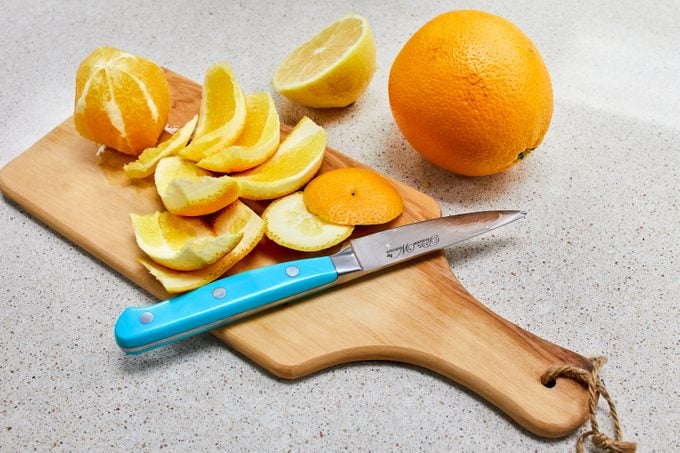
All the above methods clean and freshen, but for an extra-fresh-smelling garbage disposal, reach for some citrus, Sokolowski says. Toss a few lemon peels down the drain, turn on the cold water and grind ’em up. Orange, lime and grapefruit work too, although you might want to stick with half a grapefruit at a time and cut up the peel. Run the disposal with cold water until you don’t hear any more grinding, then let it run for 30 seconds more (while keeping the water running).
“If you’ve got a bit more time, put some chopped-up lemon in an ice-cube tray and fill it with water,” Sokolowski advises. “If you like, you can add some fresh or dried herbs as well, such as mint, rosemary or thyme.” Slide them into the freezer, and once they’re completely frozen, put a handful of ice cubes into your kitchen drain and turn on the garbage disposal. This simple homemade cleaner will sharpen the blades and leave your drain smelling great.
How often should you clean your garbage disposal?
Ideally, you should clean your garbage disposal once a week, according to Sokolowski. If that feels like too much with your current cleaning schedule, the minimum should be every two weeks. After all, think about how often you use your kitchen sink and disposal, and all the stuff that’s being washed down the drain. In addition to all the bits and pieces from your meals, there’s soap from washing your hands and doing the dishes, dirt from watering your plants and remnants of various home projects. All this builds up and needs attention.
That said, if your garbage disposal starts emitting any sort of odor, at any time, it’s time to clean it ASAP.
Tips for keeping your garbage disposal clean
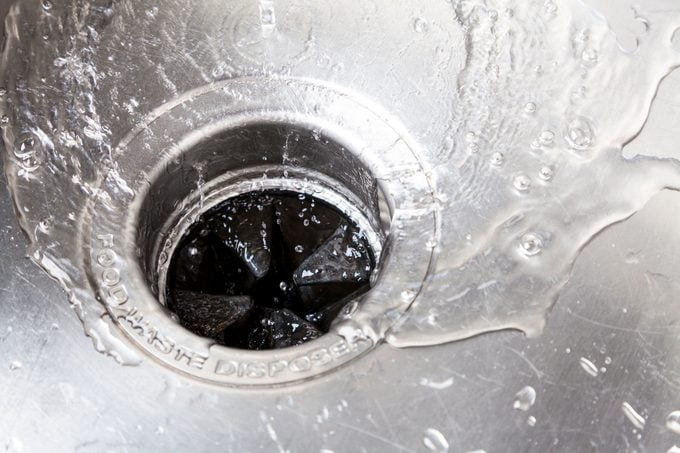
Now that you know how to clean a garbage disposal, keep it that way with these pro tips.
- Always use cold water when running your disposal. “Cold water solidifies food and makes it easier to grind,” Sokolowski says. It also keeps fat particles solid and moving down the drain. Hot water, on the other hand, liquifies fats in food, causing a thin, greasy film to coat the inside of your disposal.
- Run your disposal regularly. Keep things fresh between cleaning days by not letting food scraps sit in the disposal. Grind as you go, and send that gunk down the drain before a clog or bad smell develops.
- Don’t pour oil or grease into the disposal. Small amounts of fats from everyday food waste are OK, especially if you use cold water, but anything more than that and you’re asking for trouble. Large amounts of grease can congeal inside your disposal, causing odors and clogs. As a result, you might have to clean it more often—or even call a plumber!
- Don’t put fibrous or starchy foods in the disposal. Asparagus, celery, potato peels, artichokes and the like are big no-nos. Not only can the fibers wrap around the blades and jam the motor, but you’ll also likely find a stringy, gluey mess when it’s time to clean.
- Try a monthly drain treatment. Not all bacteria is bad. In fact, according to Soukup, using a store-bought drain treatment that’s chock-full of healthy bacteria can help your disposal smell good! Just pour it in, and let it work its magic. These beneficial micro-organisms “eat the fats, oils and grease from your disposal and pipes,” Soukup says, and can be found online, at home-improvement centers and through your local plumber.
Why trust us
At Reader’s Digest, we’re committed to producing high-quality content by writers with expertise and experience in their field in consultation with relevant, qualified experts. For this piece, Leah Groth tapped her experience as a cleaning and home writer, and then Ann Russell, the author of How to Clean Everything and a TikTok cleaning expert with 2.5 million followers, gave it a rigorous review to ensure that all information is accurate and offers the best possible advice to readers. We verified all facts and data and backed them with credible sourcing, and we will revisit them over time to ensure they remain accurate and up to date. Read more about our team, our contributors and our editorial policies.
Sources:
- Allen Rathey, director of the Indoor Health Council; email interview, Dec. 30, 2023
- Alicia Sokolowski, president and co-CEO of AspenClean; phone and email interviews, Jan. 18, 2023, and Dec. 21, 2023
- Alan Soukup, owner of Bluefrog Plumbing + Drain; email interview, Dec. 27, 2023


